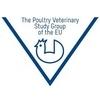Explore all the information on
Poultry vaccines
Disease prevention by vaccination is an integral part of flock health management protocols. Active immunization using live vaccines is the current industry standard. Routinely used vaccines in chickens include MDV, NDV, IBV, and IBDV, and in turkeys NDV and HEV. Newer vaccines, including molecular recombinants in which genes of immunogenic proteins from infectious agents are inserted into a live viral vector, are also being examined for commercial use. Efforts are under way to enhance vaccine efficacy by the use of adjuvants, particularly cytokines. The vaccine delivery systems include in ovo injection, aerosol, spray, drinking water, eye drop, and wing web injection. The in ovo vaccination procedure is relatively new and at the present time it is used primarily to vaccinate broiler chickens against MDV. Birds respond to vaccines by developing humoral and cellular immune responses. There are two main types of vaccine available for poultry: live or killed.
Back ground One of the challenges I had during my work as the research and development manager of one of the leading semi-integrated (rearing/processing) broiler operations in Sri Lanka was to investigate why infectious bursal disease (IBD) out breaks occurred from time to time in the two close house broiler farms belonging to the company despites of administering three IBD vaccines during a production cycle. It was...
Comments : 3
Recommendations: 1
Introduction Infectious bronchitis (IB) virus, first described in the 1930s (Schalk & Hawn, 1931), continues to be a major cause of disease in chickens of all ages and types in all parts of the world (Anon, 1988, 1991). Good quality vaccines have been available to control IB infections since the 1950s. However, despite their careful use, IB continues to be a major problem. One reason for this is the large number of...
Comments : 93
Recommendations: 3
Salmonella serotypes vary throughout the livestock industry. Historically Salmonella Enteritidis is not considered to be prevalent in Australian poultry flocks. As recently as 2018 a novel S. Enteritidis emerged in the industry (FSANZ, 2019). Although, there are no specific vaccines available in Australia against this serotype in poultry, the use of live attenuated Salmonella vaccines that have the potential to cross protect against several Salmonella serotypes could be a solution for the...
Comments : 0
Recommendations: 0
Can I use ascorbic acid to neutralize chlorine water vaccination? ...
Comments : 4
Recommendations: 1


Lost in the Market Uncertainty Caused by the Outbreak
Suggested link
Avian influenza virus (AIV) belongs to Orthomyxoviridae family and is characterised by containing negative-sense, single-stranded RNA genome of 8 segments that encode for 10 structural and at least 9 nonstructural/regulatory proteins. Hemagglutinin (HA) and neuraminidase (NA) that are the most abundant and immunogenic surface protein, and are involved in virus entry and exit from the cell. There are 18 hemagglutinin and 11 neuraminidase subtypes that are known to exist in the nature, and all...
Comments : 0
Recommendations: 0
Coccidiosis is caused by protozoa of the phylum Apicomplexa, family Eimeriidae. This disease is of worldwide occurrence and every year costs the poultry industry many millions of dollars to control. Most species affecting poultry belong to the genus Eimeria and infect various intestinal sites. The disease causes high morbidity ranging from an acute, bloody enteritis with high mortality, to subclinical disease. However, the presence of intestinal lesions depends on the Eimeria...
Comments : 0
Recommendations: 0
Coccidiosis is a disease of the intestinal lining, produced by the invasion of the mucosal cells by a very prolific protozoan parasite of the genus Eimeria. This invasion results not only in the interruption of feeding and digestive processes involved in nutrient absorption but can also cause intestinal inflammation leading to dehydration, blood loss, loss of skin pigmentation, and increased susceptibility to secondary bacterial infections like necrotic enteritis and...
Comments : 30
Recommendations: 2
Introduction
Gumboro Disease, more properly called Infectious Bursal Disease (IBD), is one of the most important viral diseases of chickens. The virus responsible for this condition (IBDV) can be found in almost all farms and countries.
Many studies have already been conducted on this disease but more are still needed to better understand the consequences of...
Comments : 78
Recommendations: 3
The commercial poultry industry is concerned about the continued spread of Avian Influenza (AI) and is closely watching as this disease is found in more countries around the world. Almost daily we receive reports that there are more outbreaks here or there in different media. We see these reports in digital newspapers, television, radio, and this time we are bombarded with more ads on WhatsApp, Twitter, Facebook, TikTok, Instagram, Telegram, etc. In many cases, we do not know the source of...
Comments : 1
Recommendations: 3
Dr. Chris Morrow (BioProperties) discusses his recent work regarding Avian Mycoplasma, in this presentation for Engormix....
Comments : 5
Recommendations: 4
Amine Benarbia (NOR-FEED) explains the benefits of using saponin supplementation in combination with vaccines, in this interview during IPPE 2023 in Atlanta, USA....
Comments : 2
Recommendations: 2
Vaccination against coccidiosis is on the rise. It is supported by a growing societal demand for antibiotic-free meat products. However, vaccination may be accompanied by some adverse effects, such as a negative impact on growth and/or the development of necrotic enteritis. Moreover, during the time of the establishment of immunity, the birds are only moderately protected. In this study, we investigated different strategies of associating cocci vaccination and a mixture of saponin plants...
Comments : 0
Recommendations: 3
Live Salmonella typhimurium (LVST) and E. coli (LVEC) vaccines have been widely used across the poultry industry as successful measures of controlling colibacillosis and salmonella, respectively. Both products are applied by mass administration, either by spray or water. This results in high mucosal exposure to the vaccine, which induces immunity mostly driven by cellular and IgA immunity. A sequence of challenge studies was conducted with the objective of evaluating if, when these vaccines...
Comments : 0
Recommendations: 1
Manuel Da Costa (Zoetis) explains the benefits of intramuscular application of vaccines regarding protection, in this interview during IPPE 2023 in Atlanta, USA....
Comments : 0
Recommendations: 1
Kalen Cookson (Zoetis) explains his work on recombinant vaccine immunity at different times of the challenge, in this interview during IPPE 2023 in Atlanta, USA....
Comments : 0
Recommendations: 1
Jesús Rubio, Poultry Biologicals Project Manager of Calier, talked with Engormix about actions against Salmonella in Poultry....
Comments : 1
Recommendations: 0
by Sam Shafer
New research shows the power of vaccination plus feed additives for birds facing intestinal parasites
Necrotic enteritis (NE) can strike young birds seemingly out of nowhere. The disease, which is driven by bacteria and marked by lesions in the gastrointestinal tract, can lead to massive flock mortality.
Poultry scientists have found that flocks can be predisposed to NE when they are...
Comments : 0
Recommendations: 4
1. Introduction Mycoplasma gallisepticum (MG) is highly pathogenic and causes infections in poultry that result in significant economic losses in commercial poultry operations worldwide [1–4]. An MG infection causes avian respiratory mycoplasmosis, which can lead to chronic respiratory disease in chickens and infectious sinusitis of turkeys, with subsequent increases in mortality and reduced growth rates [3,4]. It is well known that field strain MG infections reduce table...
Comments : 0
Recommendations: 0
Elen Rondel, Western Europe Poultry Manager at Phileo by Lesaffre, focuses on Phileo trials in broilers and layers carried out with Safglucan® and shows how this innovative solution enhances vaccine responses against viral and bacterial diseases in chicken
...
Comments : 1
Recommendations: 2
1 INTRODUCTION Vaccination against coccidiosis in broilers has become an increasingly important part of a global prevention strategy against the disease. Not only it is an effective treatment against the clinical disease, but it also represents a clear improvement in zootechnical results when vaccines are rotated with classic anticoccidial programmes. There are several studies in HIPRA’s Area Coccidia that show and explain these improvements. ...
Comments : 6
Recommendations: 1
















.jpg&w=3840&q=75)
.jpg&w=3840&q=75)



.jpg&w=3840&q=75)
_1.jpg&w=3840&q=75)











